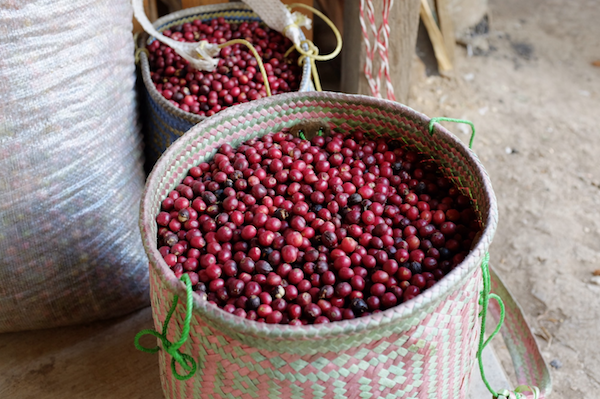The growth of operations at Catalan De Las Mercedes astounded us this year! Two years of travel restrictions only serve to amplify the feeling of amazement when returning to this farm. Producer Nico Hammond has transformed this third generation farm into an enormous operation, with new additions including a fully staffed school center for harvest workers complete with dormitories and a large scale mechanical drying facility. Among the many efforts toward sustainability, the excess water from the mill is used to irrigate grasslands where livestock graze. They also recycle the cherry pulp into organic compost.
Read MoreIn a time where coffee and convenience seem to go hand in hand, many people would probably be surprised to know just how hard it is to get this product to them. Let’s start with the fact that higher quality coffee production excels in places with predictable dry and rainy seasons, requiring elevations over 800 masl and as high as 3,000 masl.
Read MoreTerroir: Characteristics which correlate to the soil where a coffee grew. There is a wide range of specificity here. Terroir characteristics can be thought of as broadly as “A Brazilian profile has low acidity and tastes malty” — or — as specifically “this part of a farm has slightly different soil composition, and tastes different than another part of the farm planted with the same varietal.” Somewhere in the middle it’s probably most relevant to be able to identify different regional profiles within a country to understand and appreciate just how vast the endless variety of tastes can go when talking about terroir.
Varietal: The taxonomic classification after species. Coffee has two species, Robusta and Arabica. Coffee varietals can be thought of as stemming from the heirloom varietal(s) growing in western Ethiopia. Over time through natural mutation, natural selection, and deliberate hybridization, the number of varietals increased. Currently the number of coffee varietals is expanding rapidly as farmers continue to experiment and hybridize. Read more about specific varietal tastes here.
Species: There are two species of the genus Coffea, called Coffea Arabica and Coffea Canephora — more commonly called, Robusta. There are many varietals which descend from both species. Robusta is more productive and disease resistant, with less pleasant taste and high caffeine content.
Read More



